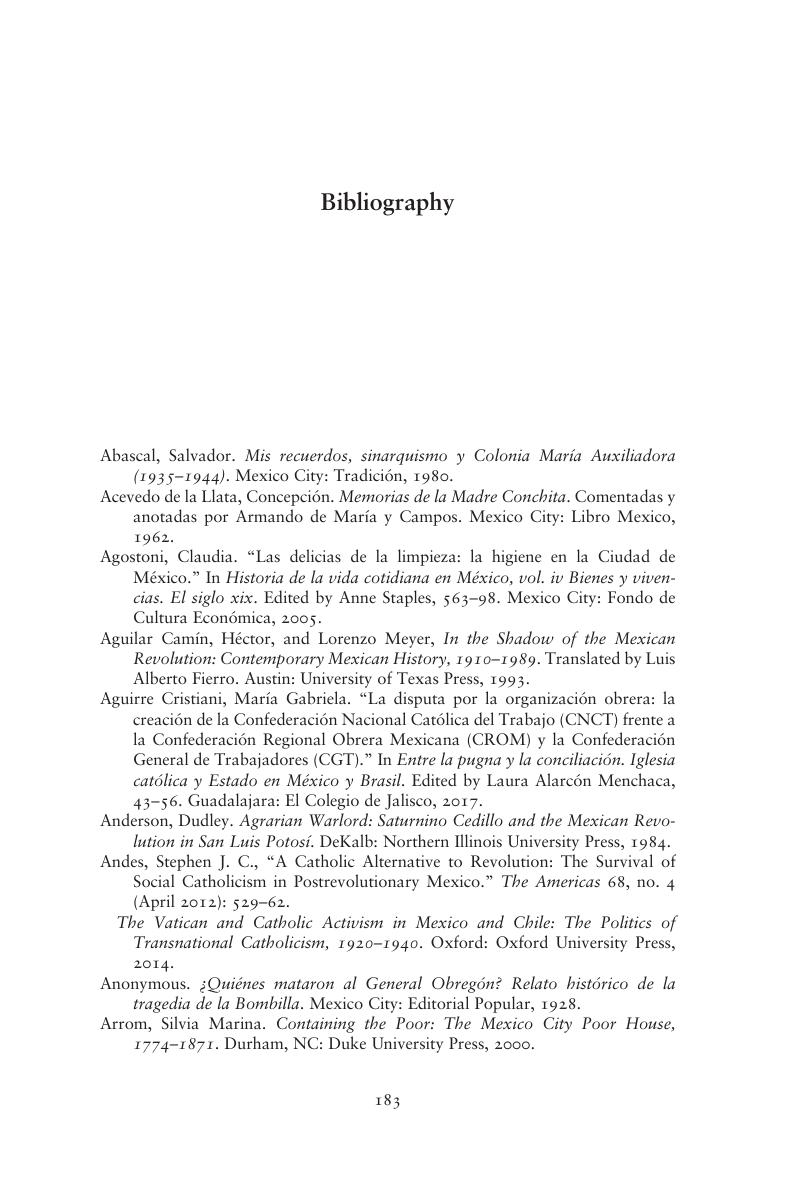Book contents
- For Christ and Country
- Cambridge Latin American Studies
- For Christ and Country
- Copyright page
- Contents
- Figures
- Acknowledgments
- Abbreviations
- Introduction
- 1 Catholics and Anticlericals
- 2 The Enforcement of Anticlericalism
- 3 Sugar Catholics
- 4 Imprudent Youth
- 5 Martyrdom
- 6 Trial
- Conclusion
- Bibliography
- Index
- Series page
- References
Bibliography
Published online by Cambridge University Press: 09 August 2019
- For Christ and Country
- Cambridge Latin American Studies
- For Christ and Country
- Copyright page
- Contents
- Figures
- Acknowledgments
- Abbreviations
- Introduction
- 1 Catholics and Anticlericals
- 2 The Enforcement of Anticlericalism
- 3 Sugar Catholics
- 4 Imprudent Youth
- 5 Martyrdom
- 6 Trial
- Conclusion
- Bibliography
- Index
- Series page
- References
Summary

- Type
- Chapter
- Information
- For Christ and CountryMilitant Catholic Youth in Post-Revolutionary Mexico, pp. 183 - 196Publisher: Cambridge University PressPrint publication year: 2019



